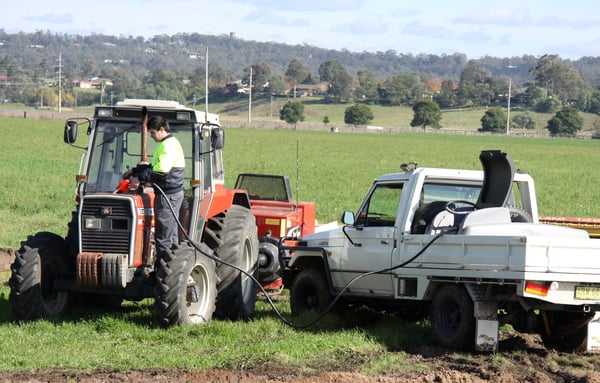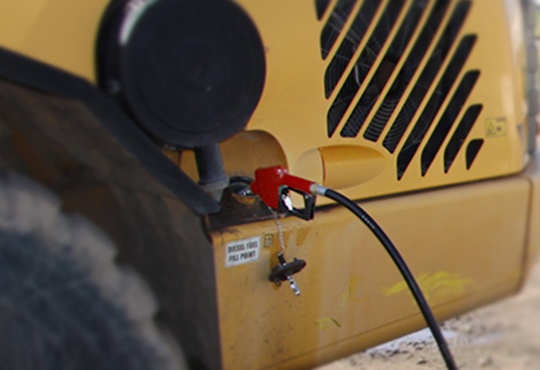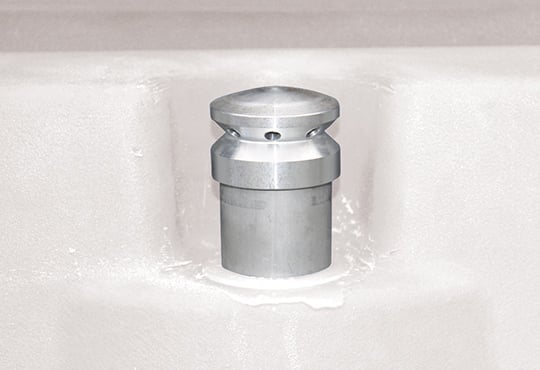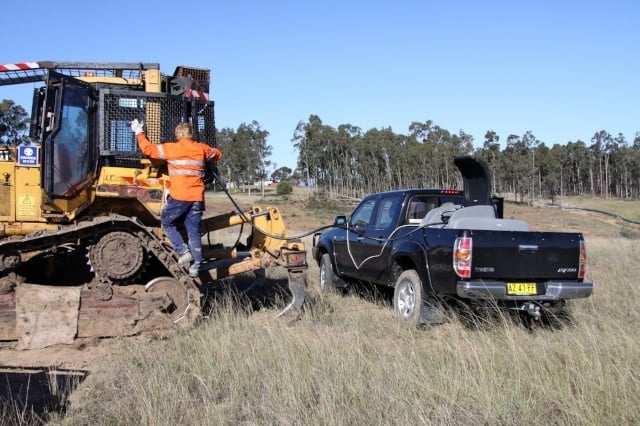There are many ways to transport diesel on the back of a utility or small truck to provide convenient onsite refuelling for construction machines, generators, pump sets or even to extend the range of your vehicle when traveling in remote areas.
In the past, it was common to use any number of 'jerry cans' or various odd steel drums, and to hand pour or siphon them into a machine or vehicle as needed.
These days, it is much more likely to find diesel contained in a purpose designed poly moulded tank, fitted with a 12V electric pump and even an auto shut-off fun or sprout, just like you use at the service station pump. These are commonly called 'Portable Diesel Refuelling Units'.
WHAT IS A DIESEL REFUELLING TANK?
While the tanks, and the attached pumps, come in varying shapes and sizes, they are all seeking to fulfil the same task. That is, to transport diesel fuel from one location such as a fixed service station to the machine, vehicle or piece of equipment that is either in a remote location, in use on-site or run out of fuel.
The tanks are usually sold according to the amount of diesel they will hold when full. Making the most of the available tray deck space, most diesel refuelling tanks come in a variety of sizes and shapes such as flat long units, bulky square units or compact skinny units.
Many manufacturers also offer various pump options. The options vary based on the amount of diesel transferred, measured in litres per minute, from the transport tank through the gun into the machine or vehicle that is being refuelled.

Why is it then that two pumps, rated for the same flow capacity (or even the same brand / model) will take different times to transfer the same amount of diesel?
How can Mary with her Brand X pump fitted to a Brand A poly diesel refuelling tank fill the 380L tank on her excavator in 9 1/2 minutes but at the same work-site, Frank with the same Brand X pump but fitted to Brand B diesel refuelling tank take 12 minutes to refuel his 380L dozer tank?
When we look a bit closer, and listen, we notice that Frank's pump is making a louder noise than Mary's and the sides of his tank are slowly changing from an outward bulge to an inward dented shape (or as some describe, like an empty juice popper carton).
After Frank stops pumping, his tank slowly returns to, more-or-less, it's original shape. Mary's pump on the other hand sounded quieter and her tank did not change shape at all.
Have you ever noticed what happens to a popper if you don't let it breath by taking your mouth off the straw every now and then? Like sucking on the popper's straw, the pump is sucking from the poly tank. Unlike the popper situation where you stop periodically to rest, (and the liquid makes a gurgling sound as air rushes back down the straw), the pump doesn't need to stop for 5, 10, 15, 20 minutes or more.
The reason Frank's diesel refuelling tank resembled a popper carton sucked in is because he was lacking some form of a breather to allow air back into the tank. With whichever tank you are using, you need a breather to replace air within the tank at the same rate you are pumping the liquid out otherwise the tank will distort such as Franks did. As the air is being replaced, the pump won't have to work as hard to suck out the liquid.

THE JUICE POPPER EXPERIMENT
To continue the juice popper analogy, below is a simple experiment to highlight the need for a breather on your diesel tank.
- Ensure you are in a location where potential spillage won't matter (i.e. lawn)
- Remove the straw from the plastic packet attached to the side of the carton.
- Using the end of the straw which is cut to a spear point, carefully puncture the foil disc vertically down with no wobbling or movement of the straw to ensure the foil seals tight around the straw (be wary of squeezing the carton to prevent spillage!)
- Take a deep breath and such as much drink as you can manage from the popper
You should notice a change in shape of the popper carton and the effort required to suck the drink up through the straw, especially toward the end of your sucking.
After removing your mouth from the popper straw you should also have notice a gurgling sound that comes from within the carton. This is the air being sucked back in quickly to compensate for the loss of liquid.
- Take the straw again and wobble it around within the foil packaging so that there is visible space between the straw and the popper carton
- Repeat step four above and take note of the change in drinking ability from the previous test and also the popper carton should have little to no change in shape
You have now successfully demonstrated the need to have a breather fitted to your tank to successfully allow liquid to flow out of your tank without adding extra pressure on your pump as it is having to work harder.
WHAT IS THE SOLUTION THEN?
The most vented vessel is an open bucket as it allows air to completely replace the fluid being pumped out but transporting diesel in open buckets is not good for the environment, your vehicle or your pocket! So to fix the leaking mess, we swing to the other extreme and completely seal the tank but in doing so create a serious case of the 'juice popper effect'.
Is it possible than to get the best of both worlds? Full flow of air in to the tank and no leakage of diesel out of the tank?
Thankfully the answer is yes!
The most effective way is to use a carefully designed float type of breather like those fitted standard on all Rapid Spray Diesel Refuelling Units and tanks. Not only does this compact device stop the precious diesel from escaping and allowing sufficient air flow back into the tank, it also filters the air so that when pumping in dusty environments you are not allowing unwanted dirt into your tank.

If Frank had done careful research before buying his diesel refuelling tank, he would have found that not all diesel refuelling units are equal and it can be because of something as simple as an effective and well-designed breather.



